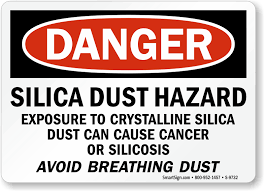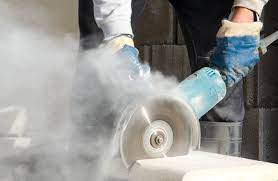Tiffany Food Corp Recalls Mini Fruit Jelly Cups Because of Possible Choking Hazard
Source: FDA Food Safety Recalls RSS Feed
Source: FDA Food Safety Recalls RSS Feed
Source: Food and Drugs Administration--Recalls/Safety Alerts
If you or a loved one has been sexually assaulted while on property owned by another person or company, you should contact a sexual assault attorney.
Sexual assault on another person’s property can be a traumatic experience, and in Texas, premises liability laws hold property owners accountable for ensuring a safe environment for their visitors.

What is a Premises Liability Lawsuit?
Premises liability in Texas is a legal doctrine that holds property owners responsible for maintaining their premises in a safe condition. When sexual assault occurs on someone else’s property, the victim may have a legal basis to hold the property owner or manager liable for the incident. Key elements to consider in a premises liability case involving sexual assault in Texas include:
It’s important to remember that every case is unique, and the legal process can be complex. Consult with a sexual assault attorney to understand your rights, responsibilities, and the best course of action for your specific situation. Legal professionals can guide you through the legal process and help you seek justice. But generally, if you have been a victim of sexual assault on someone’s property, you should consider the following:
Premises liability cases in Texas involving sexual assault are emotionally taxing, but they play a crucial role in holding property owners accountable for maintaining safe environments. It is essential for victims to know their rights and have the support of an experienced attorney who can help navigate the legal process. By seeking justice through the legal system, victims can not only obtain compensation for their suffering but also contribute to safer premises for everyone in their community.
For more information, please visit Sexual Assault | Carter Law Group (clgtrial.com) or the National Sexual Violence Resource Center.
A potential claimant may feel nervous and uncertain about bringing a legal lawsuit against the sexual abuser. Additionally, understanding court procedures and modifications to Texas law can be difficult and stressful.
Our committed Texas sexual abuse attorneys can assist you if you were the victim of sexual misbehavior or abuse.
Call Carter Law Group in Texas today to arrange your free, no-obligation consultation. Call (214) 390-4173 or submit your case.
Source: Food and Drugs Administration--Recalls/Safety Alerts
The biometric lock on the gun safes can be opened by unauthorized users, posing a serious injury hazard and risk of death.
Source: Recall List
Source: Recall List
Source: Recall List
In recent years, the beauty industry has seen a surge in demand for hair straightening products that promise sleek, frizz-free locks. Many of these products, however, contain formaldehyde and formaldehyde-releasing chemicals like methylene glycol, which are known to pose serious health risks. CNN has recently reported the U.S. Food and Drug Administration (FDA) plans to propose a ban on formaldehyde and formaldehyde-releasing chemicals in hair straightening products.
Understanding Formaldehyde and Its Risks Like Uterine Cancer
Formaldehyde is a colorless, strong-smelling gas used in a variety of industries, including hair straightening products. It is a potent preservative that can help maintain a product’s shelf life and effectiveness. Unfortunately, formaldehyde is a known carcinogen and can pose serious health risks when inhaled or absorbed through the skin. The risks associated with formaldehyde exposure include:
Formaldehyde in Hair Relaxers

Hair straightening products often contain formaldehyde or formaldehyde-releasing chemicals like methylene glycol to achieve the desired results. These chemicals are used in the formulation to break down hair’s natural bonds and reshape them into a straighter form. The high heat applied during the straightening process causes these chemicals to release formaldehyde gas, which poses a risk to both customers and salon professionals. If you are a salon professional or consumer who has been diagnosed with an illness like uterine cancer, your illness may be related to your use of hair-straightening products.
Why the FDA Is Considering a Ban on Formaldehyde in Hair-Straightening Products
One of the primary issues surrounding this hidden link is the lack of comprehensive regulation in the beauty industry. Many consumers are unaware that formaldehyde or formaldehyde-releasing chemicals are present in hair-straightening products. This knowledge gap is a result of limited transparency and labeling requirements. With an absence of clear warnings, consumers, and salon professionals unknowingly expose themselves to these risks.
The FDA’s possible ban of formaldehyde and formaldehyde-releasing chemicals in hair straightening products stems from a commitment to public health and safety. The agency recognizes the potential harm these products can cause and aims to protect consumers and salon workers. The proposed ban aligns with the following key concerns:
The FDA’s potential proposal to ban formaldehyde and formaldehyde-releasing chemicals in hair straightening products is a significant step towards safeguarding public health. By reducing the exposure to these hazardous substances, consumers and salon professionals can enjoy the benefits of hair straightening without the associated health risks. This proposal marks a positive shift towards safer beauty practices, emphasizing the importance of safety and transparency in the industry.
For more information, visit our Hair Straightener Lawsuit page.
Learn more about your legal options today – Call (214) 390-4173 or filling out our case submission form.

Dusty Workplaces can cause a life-threatening disease called silicosis.
Silicosis in dusty workplaces is a life-threatening risk. While many occupational hazards and the workplace injuries they cause are widely recognized, some workplace dangers are relatively unknown to the general public. Silicosis, a debilitating lung disease caused by the inhalation of crystalline silica dust, is such a danger in many dusty jobs.
What is Silicosis?
Silicosis is a chronic and irreversible lung disease resulting from prolonged exposure to respirable crystalline silica (RCS) dust. RCS is a fine, breathable dust created when materials containing silica, such as quartz, are cut, ground, or crushed. Silica is widely present in various industries, including construction, mining, manufacturing, and agriculture. The inhalation of silica dust can lead to lung inflammation, scarring, and a range of serious health problems.
What causes Silicosis?
Silicosis is primarily caused by the inhalation of crystalline silica dust, which is commonly released during certain industrial processes. Key causes of silicosis include:
What are the signs and symptoms of Silicosis?
The symptoms of silicosis may not appear until years after exposure, making it a hidden threat for many workers. Common signs and symptoms include:
As you can see, these symptoms are non-specific, meaning they can be related to many illnesses. If you or someone you know experiences these symptoms, it is crucial to consult a healthcare professional promptly, especially if they have a history of exposure to silica dust.
How is Silicosis Diagnosed?
Diagnosing silicosis involves a combination of medical history, physical examination, and various tests to confirm the presence of the disease. Here’s how the diagnostic process typically unfolds:
How do we prevent Silicosis?

After diagnosis: What do I do?
If you or a loved one has been diagnosed with silicosis after being exposed to silica dust at a dusty workplace, you may have a lawsuit against the manufacturers of products used on that job.
Silicosis is a progressive disease. In other words, your symptoms may become worse over time. If you develop silicosis from working on a dust-filled job, you should not be burdened with expensive medical bills.
Let us help. To talk to a lawyer about your potential silicosis claims, please fill out your questionnaire for a free case evaluation at Contact Us | Carter Law Group (clgtrial.com)
For more information about silicosis generally, please visit the Occupational Safety and Health Administration’s webpage regarding silica safety at Silica, Crystalline – Overview | Occupational Safety and Health Administration (osha.gov)
Source: FDA Food Safety Recalls RSS Feed

A female-owned plaintiffs’ firm specializing in catastrophic personal injury, sexual assault, and employment discrimination with over 20 years of legal experience.
